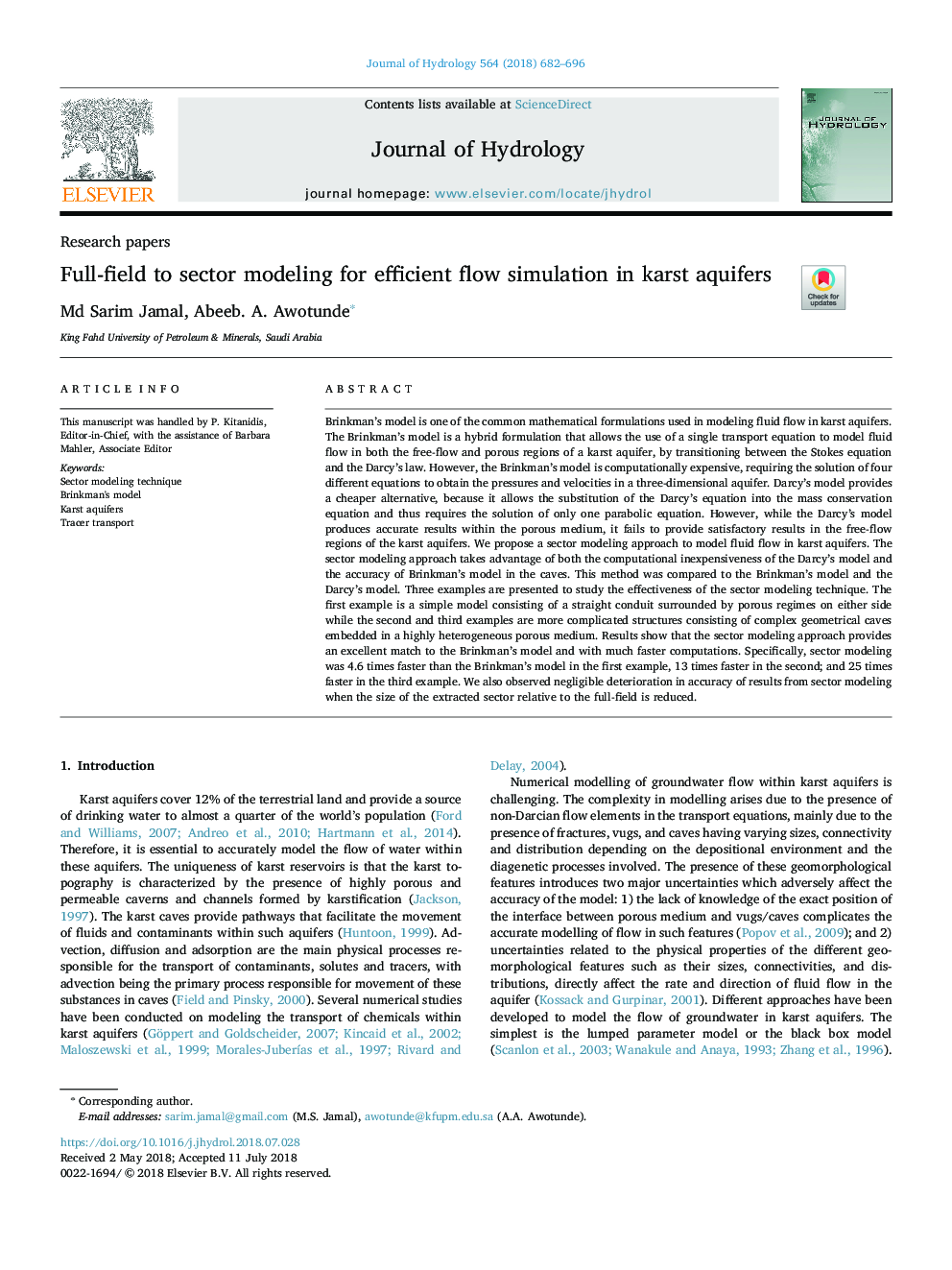| Article ID | Journal | Published Year | Pages | File Type |
|---|---|---|---|---|
| 8894502 | Journal of Hydrology | 2018 | 15 Pages |
Abstract
Brinkman's model is one of the common mathematical formulations used in modeling fluid flow in karst aquifers. The Brinkman's model is a hybrid formulation that allows the use of a single transport equation to model fluid flow in both the free-flow and porous regions of a karst aquifer, by transitioning between the Stokes equation and the Darcy's law. However, the Brinkman's model is computationally expensive, requiring the solution of four different equations to obtain the pressures and velocities in a three-dimensional aquifer. Darcy's model provides a cheaper alternative, because it allows the substitution of the Darcy's equation into the mass conservation equation and thus requires the solution of only one parabolic equation. However, while the Darcy's model produces accurate results within the porous medium, it fails to provide satisfactory results in the free-flow regions of the karst aquifers. We propose a sector modeling approach to model fluid flow in karst aquifers. The sector modeling approach takes advantage of both the computational inexpensiveness of the Darcy's model and the accuracy of Brinkman's model in the caves. This method was compared to the Brinkman's model and the Darcy's model. Three examples are presented to study the effectiveness of the sector modeling technique. The first example is a simple model consisting of a straight conduit surrounded by porous regimes on either side while the second and third examples are more complicated structures consisting of complex geometrical caves embedded in a highly heterogeneous porous medium. Results show that the sector modeling approach provides an excellent match to the Brinkman's model and with much faster computations. Specifically, sector modeling was 4.6 times faster than the Brinkman's model in the first example, 13 times faster in the second; and 25 times faster in the third example. We also observed negligible deterioration in accuracy of results from sector modeling when the size of the extracted sector relative to the full-field is reduced.
Keywords
Related Topics
Physical Sciences and Engineering
Earth and Planetary Sciences
Earth-Surface Processes
Authors
Md Sarim Jamal, Abeeb. A. Awotunde,
